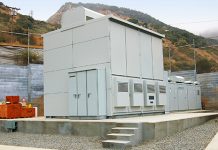John Petersen
I’m often critical of public lithium-ion battery manufacturers based on objective investment metrics including their financial condition, their results of operations, their potential markets and the fundamental soundness of their business plans, but I don’t usually drill down into thornier issues like technical merit and business execution because those questions are out of my depth and in the words of Harry Callahan, “A man’s got to know his limitations.”
Every once in a while, however, organizations that are competent to evaluate those issues publish analytical reports that can help investors cut through the hype and make better investment decisions. The following “Innovation Grid” graphic from Lux Research that first appeared in a June 2011 report titled, “Using Partnerships to Stay Afloat in the Electric Vehicle Storm,” is a fine example.

In the underlying report, Lux explained that they:
- Evaluated the value of core technologies, the addressable market size, the competitive landscape, and IP position to rank companies along a vertical axis ranging from 1 (Low) to 5 (High);
- Evaluated management strength, profitability, partnership value, overall momentum, and the surrounding environment to rank companies along a horizontal axis ranging from 1 (Low) to 5 (High);
- Evaluated maturity by considering size, stage of development, and annual revenues to rank companies by dot size; and
- Provided a subjective overall ranking ranging from strong caution to strong positive.
Lux developed the Innovation Grid hierarchy of lithium-ion battery producers because its market analysis indicates that global lithium-ion battery manufacturing capacity will exceed demand by a wide margin for the better part of the next decade. Accordingly, it believes the looming capacity glut will force an inevitable consolidation where a handful of dominant manufacturers survive while weaker market participants fail.
Since I didn’t create the Innovation Grid hierarchy, I’m not going to argue about the relative technical and business merits of the various companies. My primary goal today is to observe that some winners of headline grabbing ARRA battery manufacturing grants in August 2009 seem to be technical and/or business laggards, including:
- JCI-Saft, which was awarded $299.2 million dollars in ARRA battery manufacturing grants, recently became a wholly owned subsidiary of Johnson Controls (JCI), and is safely ensconced in the heart of mediocrity;
- A123 Systems (AONE), which was awarded $249.1 million dollars in ARRA battery manufacturing grants but received mediocre grades for technical merit and sub-par grades for business execution; and
- Ener1 (HEV), which was awarded $118.5 million dollars in ARRA battery manufacturing grants but received laggard grades for both technical merit and business execution.
All of them are apparently less attractive business opportunities than Advanced Battery Technologies (ABAT) which was savaged in a trio of articles from Variant View Research in March and April of this year, but is well positioned in the Lux hierarchy.
At Friday’s close ABAT was trading at 30% of book value, 70% of annual sales and 1.9 times trailing-twelve-month earnings. If you want to own stock in a lithium-ion battery company ABAT seems like a far better choice than the subsidized laggards.
Disclosure: None.








